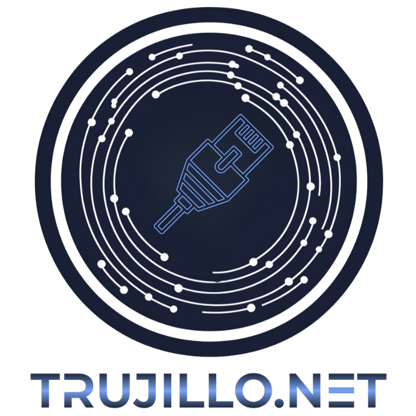Building a Fast and Secure Office Network: A Comprehensive Guide
Build a fast and stable network. Support your team with strong infrastructure. We show you how it’s done.
4/8/20254 min read


Understanding Your Network's Backbone
In the realm of office networks, a solid understanding of the foundational elements is crucial for establishing a performance-oriented and secure infrastructure. The backbone of any network typically comprises a combination of routers, switches, and cabling, each playing a vital role in ensuring seamless connectivity and data transmission. Proper planning and design are fundamental in creating this optimal network architecture, which can significantly affect both speed and stability.
Routers serve as the traffic directors in a network, managing data flow between different devices and the internet. Their capacity to route data efficiently contributes not only to the speed at which information is transferred but also to the overall security of the network. A well-chosen router can help in preventing unauthorized access while maintaining high performance. On the other hand, switches connect multiple devices within the same network, enabling local area communication. The quality and configuration of switches can directly influence the network’s bandwidth and latency, which are critical for tasks that require high data transfer rates.
Cabling, although often overlooked, is equally important. Different types of cables, such as Ethernet and fiber optic cables, have varying capabilities in terms of speed and distance. Selecting the appropriate cable type is essential for maximizing the efficiency of both switches and routers. Furthermore, an intelligently designed network architecture promotes scalability, allowing businesses to expand their network without compromising performance or security. By meticulously crafting the layout of the network—considering factors like device density, connection types, and potential bottlenecks—companies can build a robust framework that not only supports today’s demands but is also prepared for future growth.
Cabling and Hardware Essentials
Establishing a fast and secure office network relies heavily on the proper selection and installation of cabling and hardware. Among the various cabling options available, Ethernet cables remain a staple for many businesses due to their reliability and performance. Commonly, Category 5e (Cat 5e), Category 6 (Cat 6), and the more advanced Category 6a (Cat 6a) cables are used, with each supporting specific data transfer speeds. Cat 5e is ideal for lower-speed applications, typically up to 1 Gbps, while Cat 6 can support speeds up to 10 Gbps over shorter distances. For those requiring higher bandwidth, fiber optic cabling presents a suitable option, offering exceptional data transmission rates and distance capabilities, making it ideal for larger office environments.
In addition to cabling, the hardware components of an office network play a crucial role in performance and security. Key devices include routers, switches, and access points. A robust router serves as the gateway for internet connectivity, and selecting one with advanced features such as dual-band capabilities and Quality of Service (QoS) can significantly enhance user experience by managing bandwidth allocation effectively. Managed switches are recommended for larger networks as they allow for better control over traffic and facilitate network segmentation, enhancing both security and efficiency.
Access points are essential in facilitating wireless connectivity in an office environment, where devices are increasingly mobile. Investing in high-quality access points, especially those supporting the latest Wi-Fi standards like Wi-Fi 6, can dramatically improve speed and coverage. Furthermore, proper installation and maintenance practices, including regular cable inspections, ensuring that hardware is free from dust, and updating firmware, are critical. These steps help to sustain optimal performance levels and safeguard the network against potential vulnerabilities. By focusing on these cabling and hardware essentials, organizations can lay a strong foundation for a robust, high-speed office network.
Implementing Robust Security Measures
Establishing a secure office network is paramount for protecting sensitive data and maintaining operational integrity. One of the first steps in this process is the proper configuration of firewalls. Firewalls serve as the first line of defense against unauthorized access, filtering incoming and outgoing traffic based on predetermined security rules. Properly configured firewalls can significantly reduce the risk of malicious attacks, providing a vital layer of protection for networked devices.
In addition to firewalls, implementing Virtual Private Networks (VPNs) is crucial for securing remote access to office networks. VPNs create an encrypted tunnel between remote users and the office network, ensuring that data transmitted is safe from interception. This is especially important in today’s landscape, where remote work is increasingly common. By utilizing VPN technology, organizations can extend their security measures to remote employees, safeguarding sensitive information regardless of location.
Moreover, instituting strong password policies can greatly enhance network security. This entails requiring users to create complex passwords, enforcing regular password changes, and promoting the use of multi-factor authentication (MFA) where feasible. By adopting these practices, organizations can significantly reduce the chances of unauthorized access due to compromised credentials.
Identifying potential vulnerabilities within the network is another critical component of robust security measures. Conducting regular security assessments and penetration testing can help in pinpointing weaknesses before they can be exploited by cybercriminals. Furthermore, maintaining updated software and security protocols is essential. Regularly applying patches and updates mitigates the risks posed by known vulnerabilities, ensuring that the network remains resilient against evolving threats.
By taking these comprehensive steps—configuring firewalls, utilizing VPNs, enforcing strong password policies, identifying vulnerabilities, and keeping systems updated—organizations can create a secure office network that withstands various cyber threats.
The Role of Expert Support in Network Management
In the ever-evolving landscape of technology, the importance of expert support in network management cannot be overstated. Reliable, efficient, and secure office networks are critical for the seamless operation of any organization. Engaging IT professionals to manage and monitor your network ensures that potential issues are identified and addressed swiftly. This proactive approach minimizes downtime, which can significantly impact productivity and, ultimately, profitability.
Skilled network managers bring valuable expertise to the table, particularly in troubleshooting various network issues. Their knowledge allows them to quickly diagnose problems that may arise, whether they stem from hardware failures, software conflicts, or security breaches. Prompt resolution of such issues is essential for maintaining the continuity of business operations and protecting sensitive data. Furthermore, expert support aids in ensuring compliance with industry-specific security standards, thereby safeguarding critical information and minimizing the risk of financial penalties due to non-compliance.
Another vital benefit is the scalability that expert IT support can offer as a business grows. As an organization expands, its network demands will evolve. IT professionals provide ongoing assessments and audits of network performance, identifying areas that require enhancement or adjustment. This adaptability ensures that the network infrastructure can not only support current operations but also facilitate future growth, accommodating increased user demands and advanced technology solutions.
In addition to scalability and troubleshooting, continuous oversight by IT experts allows for a comprehensive approach to network security. Regularly updated security measures help safeguard the network against emerging threats, ensuring that businesses remain resilient in a rapidly changing technological environment. By incorporating expert support into network management, organizations can maintain a fast, secure, and reliable office network that promotes efficiency and protects vital resources.
Subscribe To Newsletter Form
COPYRIGHT © 2025 Trujillonet LLC.
Phone number
Mon - Sat 7:00 AM - 6:00 PM
Hours
Follow Us On Social Media
Contact Us
